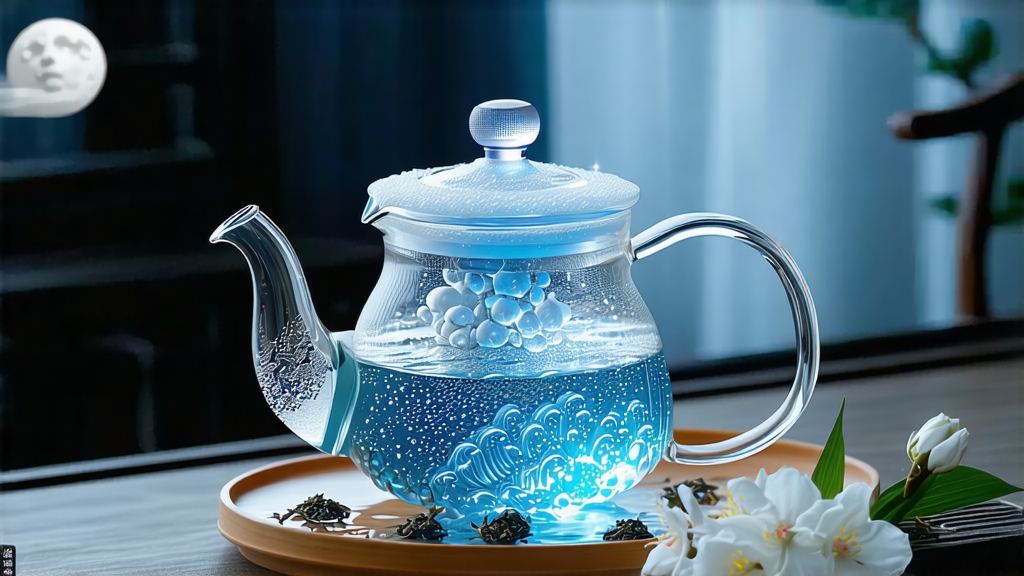
White Hair Silver Needle—Bai Hao Yin Zhen in Mandarin—is the most aristocratic expression of China’s white-tea family. While casual drinkers often equate “white tea” with any pale liquor, connoisseurs know that only three protected-origin styles truly qualify: Silver Needle, White Peony, and Shou Mei. Among them, Silver Needle stands alone, made entirely from unopened leaf buds and valued for a fragrance that suggests fresh rain on a spring orchard. Its story begins in the misty coastal mountains of Fujian’s Fuding and Zhenghe counties, where the Da Bai (Big White) tea cultivar first took root during the early Qing dynasty. Local chronicles from 1796 mention “silver tips” presented to the Jiaqing Emperor; court physicians praised the buds for cooling the blood and clearing summer heat, so the harvest was monopolized by imperial warehouses. When the last dynasty fell, the technique filtered back to village households, and by the 1920s Fuding merchants were exporting crateloads of needle tea via Hong Kong to Europe, where it acquired the poetic English name that still graces specialty menus today.
The bud itself is nature’s miniature masterpiece. Appearing in early March, each tip is cloaked in a duvet of fine white hairs—trichomes that protect the nascent leaf from cold and insects. Under a loupe the hairs look like tiny glass tubes; they scatter light, giving the dried tea its silvery sheen and contributing a tactile sweetness when brewed. A single kilogram of Silver Needle requires roughly thirty thousand buds, all plucked by hand between dawn and mid-morning while dew still guards against brittleness. No gloves are worn; pickers rely on the nail of the thumb to snap the stem cleanly without bruising the base, a motion repeated thousands of times in chill mountain air.
Once gathered, the buds undergo the simplest yet most unforgiving craft in all of tea manufacture: pure withering. There is no pan-firing, no rolling, no shaking; the goal is to let moisture leave the cells slowly while nature’s enzymes create flavor. Traditionally the buds are spread one layer deep on bamboo trays woven from thin strips of mao zhu, then slid onto racks beneath a translucent roof of thatch and glass. For thirty-six to forty-eight hours the tea master becomes a meteorologist, adjusting louvers to coax a steady stream of 22–26 °C air across the trays. At night the mountain breeze carries the scent of orange blossoms and the sea; by day filtered sunlight warms the buds to a pale ivory. When the moisture content drops to approximately 10 %, the trays are moved to a low-temperature charcoal oven for a final twenty-minute bake at 40 °C, just enough to stabilize the leaf without caramelizing sugars. The finished tea retains 4–6 % moisture, ensuring decades of graceful aging if stored away from light and odor.
Modern producers sometimes shorten withering to twenty-four hours using climate-controlled tunnels, but the old-style slow fade is still preferred for top-grade tribute lots. A telling sign is the bud’s posture: traditionally processed needles curve slightly like fish hooks, whereas rushed versions stay straight and feel glassy to the touch. Aroma is another clue; slow withering concentrates lilac and honey notes, while mechanical drying can leave a faint green-tea grassiness.
Silver Needle is one of the few teas that travels well through time. Aged examples from the 1990s now fetch auction prices rivaling vintage pu-erh. As the buds respire in dark clay jars their caffeine slowly combines with amino acids, yielding a darker liquor and a medicinal sweetness reminiscent of aged Chinese orchid or even dried longan. Collectors store the tea in kraft paper, then wrapped again in unbleached cotton, allowing just enough oxygen to keep the transformation alive but not so much as to turn the leaf musty.
Brewing Silver Needle is an exercise in restraint. The buds are dense; boiling water shocks the hairs and can extract bitter catechins. Aim for 75 °C water and a 1:20 leaf-to-water ratio—roughly three grams for a 150 ml vessel. Glass teaware is ideal because it lets you watch the buds stand upright, then slowly sink like miniature submarine periscopes. After a ten-second rinse to awaken the leaf, the first infusion should